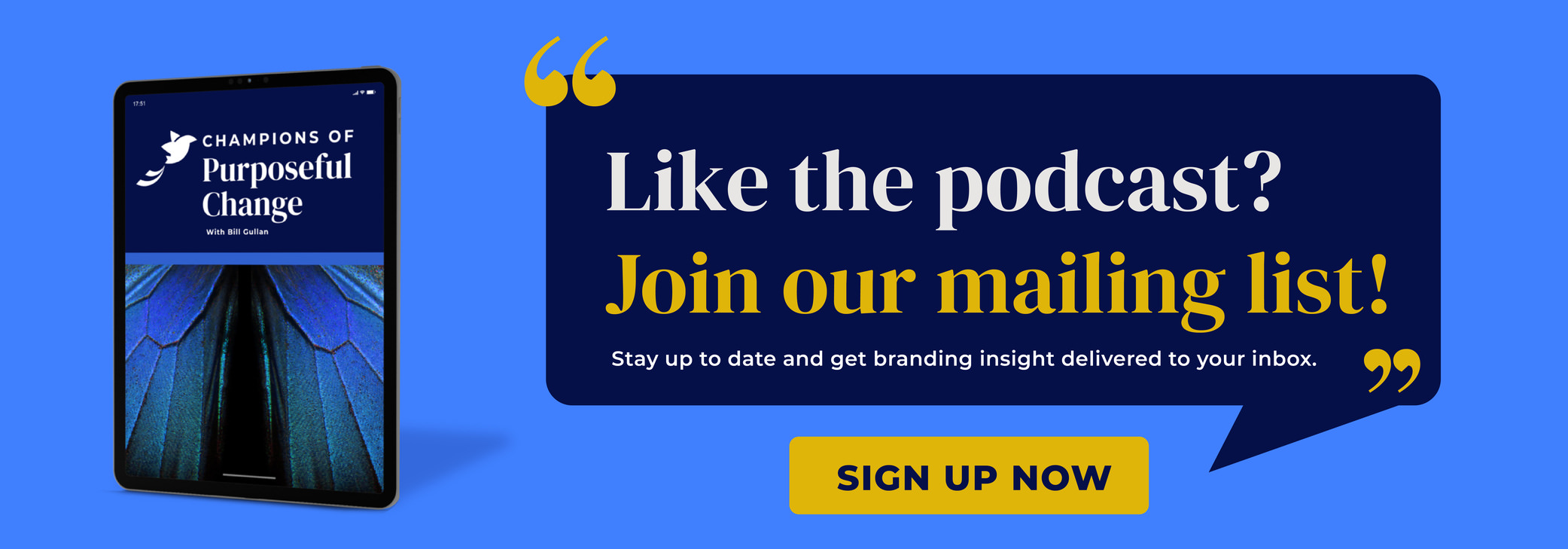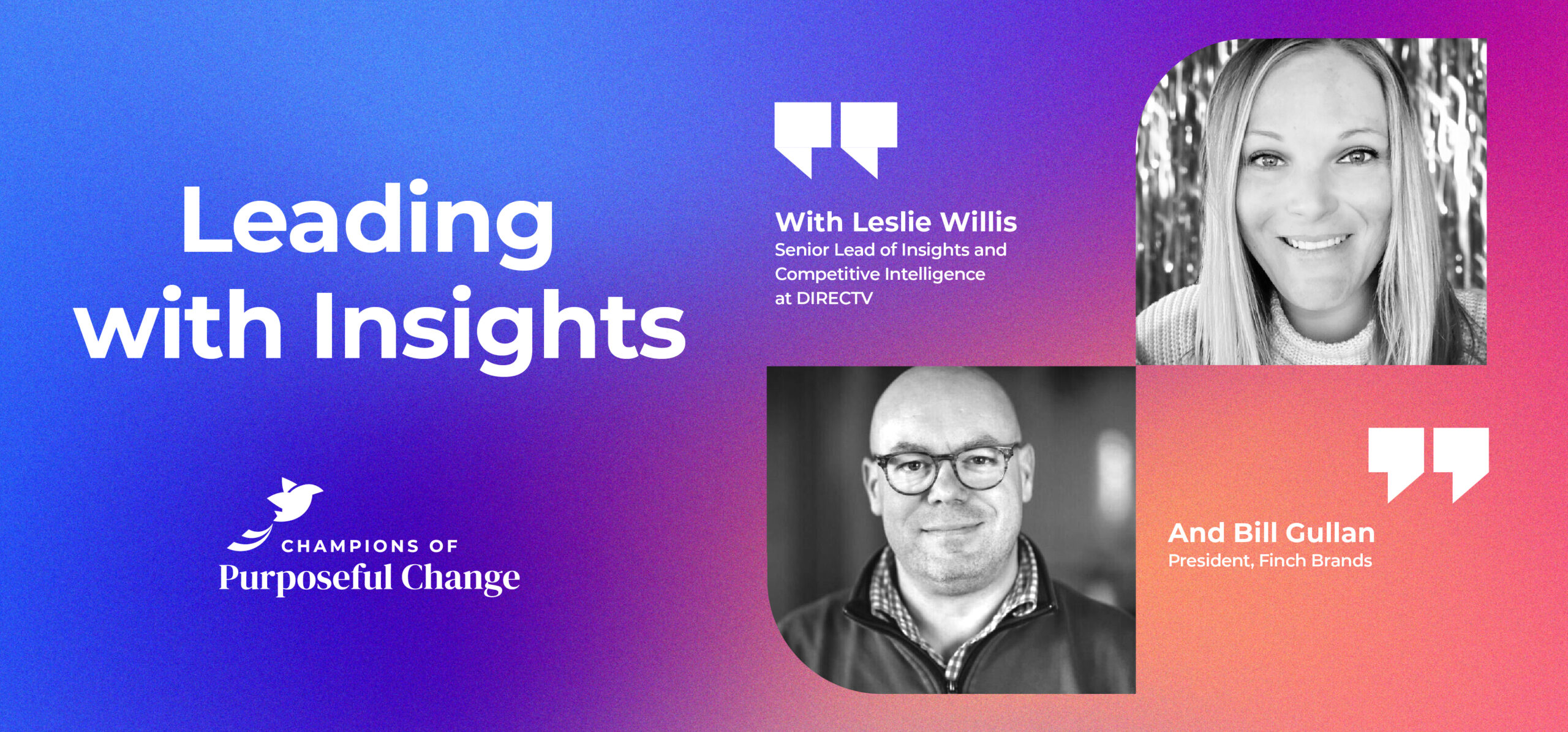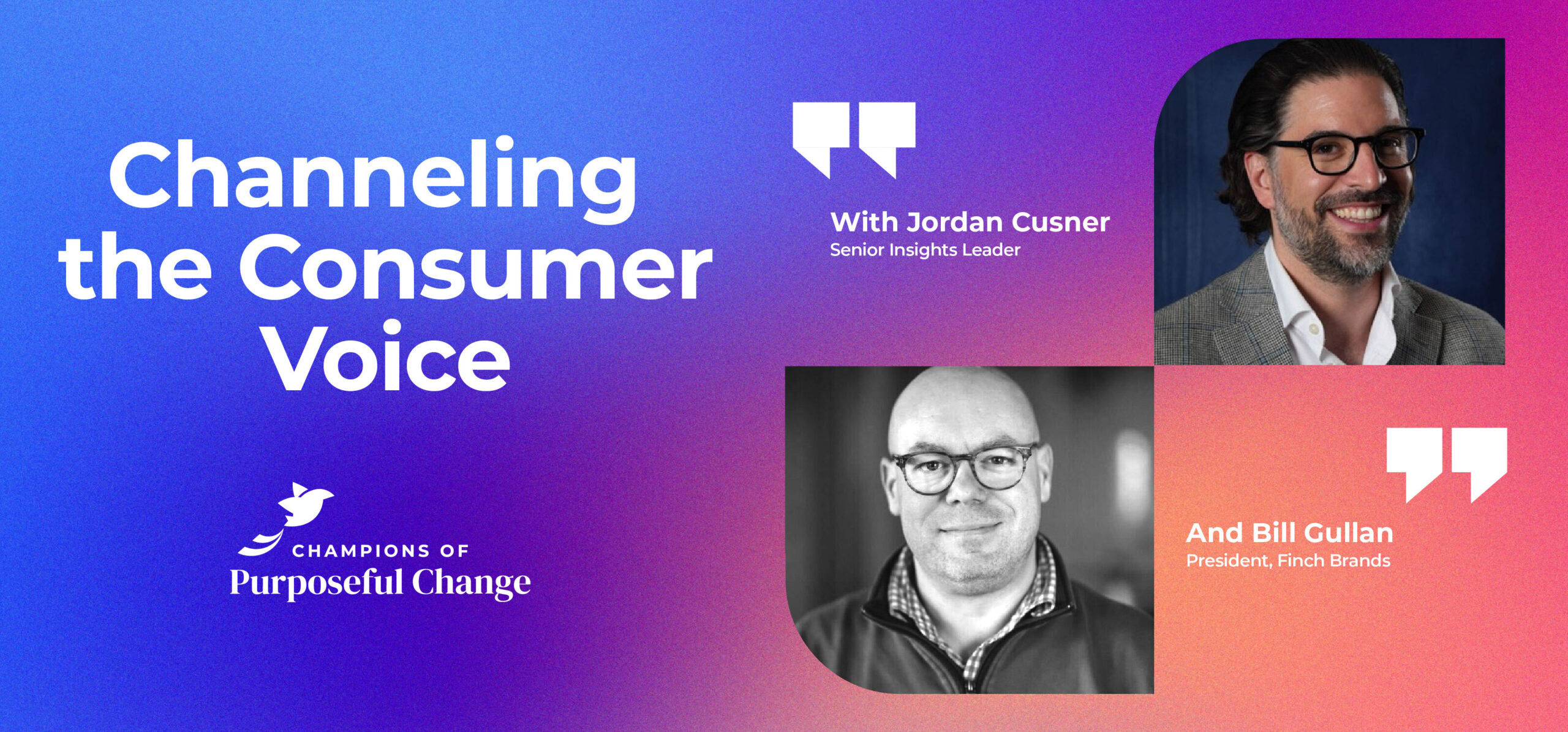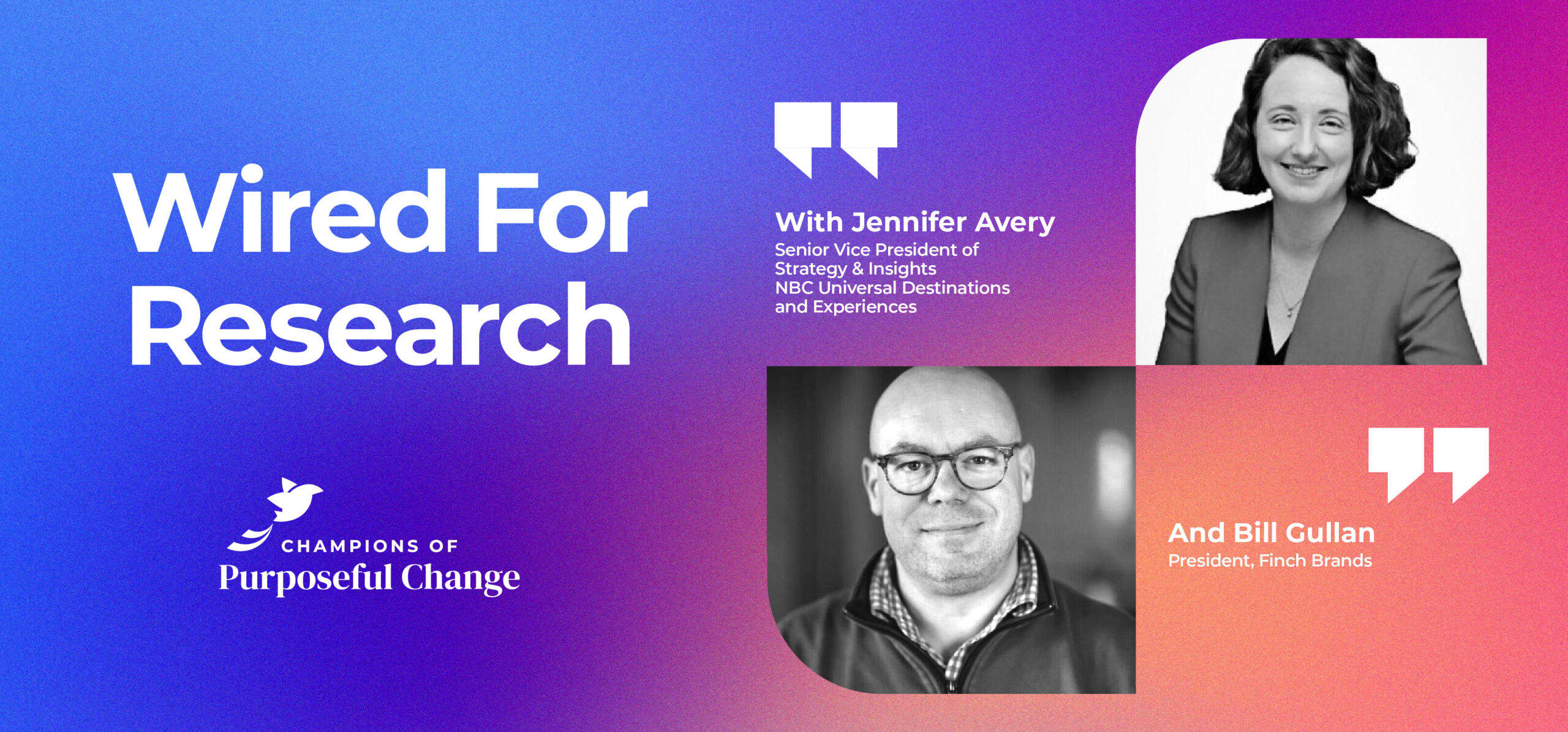One Big Idea: Culture Drives Commerce
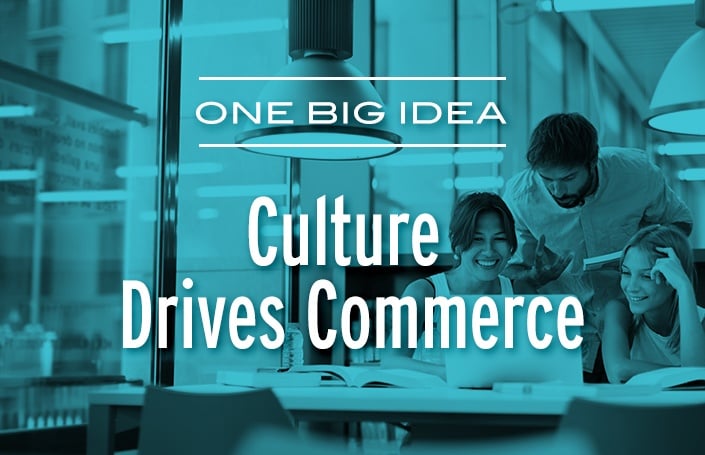
Commerce is downstream from culture — and emerging cultural values presage what gets bought and how. In this episode, Bill provides several examples of how brands can anticipate or capture changes in the culture to promote brand relevance and success.
Podcast: Download Subscribe: iTunes | RSSTranscription
Bill Gullan: Welcome one and all, this is Real-World Branding. I’m Bill Gullan, President of Finch Brands, a premier boutique branding agency. So we’re six-seven episodes in now, for the Real-World Branding podcast. It’s been super fun for us. Our guests have been so gracious with their time and their insight.
Some of the feedback we’ve been receiving from listeners has also been very positive, so we’re gratified by that. One of the things that we’ve heard, that we think we’re going to try, is in off weeks from the interviews, we’re going to record a shorter monologue about key ideas that are practical and that are important that have emerged from the interviews that we’ve conducted.
So the schedule will be an interview, then the week after, some reflections with really One Big Idea – one major point that came to mind from the work that we’ve done. We’re going to start with that today, and it was very clear from the conversation with Joanna Klein the CMO of Fathead, the importance for Fathead, in terms of their social media strategy, their content strategy, etc. of being engaged in the culture.
It was obviously commercial information that they want everyone to understand – who are the athletes, who are the licensed characters that are available in the various formats that Fathead offers –but important to them and for them is to be seen as being part of the enduring conversation about sports and entertainment that their target customers and partners really thrive on in terms of creating demand and ultimately transactions. So the big idea today is that Culture Drives Commerce.
A couple of examples, from my own history and our own history of Finch Brands, of this in a moment, but when marketers and branding folks are stuck and they’re focused perhaps at a level that is beneath the ongoing cultural conversation or the zeitgeist, what typically emerges is something in terms of brand messaging or marketing messaging that ultimately lands with a splatter. With a thud rather than the impact that one is seeking as a marketer.
For brands that are consumer facing, having a strong command of the culture, having the ability in an opportunistic way to insert one’s brand into the ongoing continuing conversation around culture is absolutely essential for brands to be current and relevant.
The media had largely created a bipolar reality in terms of the dialogue about what it means to be a man. On one end, there was this metrosexual cliché or profile that had been created of a largely urban skewing man, city dweller, young who was really getting interested in fashion and style and grooming and hygiene and all these different things. Then the media created an opposite pole to that which is the caveman that didn’t care about these things.
Now, I don’t think the data would suggest there really ever was such a war between the caveman and the metrosexual so to speak, but had there been one the metrosexual without question would have been victorious because of the fact that grooming, hygiene, style, and everything else has become a dominant part of the masculine creed. As we moved into this decade and beyond, the level of transaction around men’s health, style, personal care, etc. has grown stratospherically.
In working with Joseph Abboud, there was a launch that they had done in conjunction with Macy’s that was a licensed brand Joe by Joseph Abboud. It was focused on college juniors and seniors to really get that first interview suit. They were selling suit separates, and they were selling sportswear but it was primarily about sport coats and suits for young men who maybe had very strong brand associations for Abercrombie, American Eagle or other brands that they knew and then marketed directly to them.
These were fashion conscious consumers, but they didn’t have a clue when it came to tailor clothing. How to wear it? Whom to trust? Etc. So when building messaging and imagery around that it was important to reference and play off of that cultural conversation about metrosexuality and what it meant in an emerging and evolving way for men to be men. That was one example.
Another one that was a bit more recent in our work with ThinkGeek. The dominant exciting interesting e-commerce purveyor of both licensed and proprietary goods that are supposed to appeal to the geek in all of us.
The business was little less than a decade old. They started really with a focus on what the traditional definition of geek had been – a person who was very smart, who was very adept technically, often in the profession of being a developer or anything else and thus their logo had a brain in it. Their tagline was ‘Stuff for Smart Masses.’ The brand was built in some ways on the self-identification of a geek in a traditional sense, and they were building product for that person and that person was not necessarily considered to be as socially adept, that person was considered to be having a small group of friends, etc.
The notion of a geek in culture has changed considerably over the course of that decade ‘I’m geeking out about XYZ.’ Geek became more of a signifier of one’s passions and going deeper with one’s passions. Sharing and building community became part of what a geek is as the decade came to a close, and we moved into the 2010’s or whatever we call it.
So here we are where ThinkGeek had a brand and a business that was very successful with a very strong following, but their definition of geek was a little bit out of date. When they brought Finch in to manage re-branding, the first element of the process was really understanding what a geek is all about today. You see NBA players wearing Urkel inspired outfits in post-game press conferences; you see everyone talking and using that phrase as noted ‘geeking out.’
The cultural conversation about ‘geekdom’ had moved more quickly than perhaps the commercial application and the things you could put out into the marketplace. Thus, the re-branding process was not really all about a great new logo and tag line which became ‘Join In. Geek Out.’ In many ways the new brand is reflective of the transition and evolution that geeks had taken – in terms of being a marginalized subculture within the Internet revolution to being a dominant cultural force and all of us having a geek that we could find inside of us when we’re around the things that are most compelling to us. So that is an example of how an e-commerce company really wrapped up into their arms, the passion, and momentum around a cultural movement to define ‘geekdom’ anew.
The last one is the Scünci, the brand of Conair, owned by Conair, known by many over the time as the originator and purveyor of the scrunchie, which Sex in the City famously labeled dead late in their run, and I’ve heard it might be coming back. Either way, Scünci had grown into a very sizable brand in terms of hair accessories for women and girls in food, drug, and mass. Forty percent market share whatever the number was competing with Goody and many, other brands, and they came to Finch to do a category study and a brand evolution.
In many ways, this was a category where the retailer and the manufacturers, Scünci included, had conspired to make very uninspiring and unemotional play – to be all about replenishment and all about technologies, specs, ‘the no slip grip,’ and everything else, which certainly has its place. However, what we encouraged the brand to summon was: what’s the emotional undercurrent of this brand? What’s the role that hair accessories play in her life day in and day out?
We found through our research a couple of things that related to active women who play sports, are involved in working out, or whatever the case may be. What underlies the category in many ways is this notion of confidence, and that hair accessories give women the tools that it takes to be their confident best. Whether they’re looking to blend in or stand out, from day to night and between, what Scünci was really providing, in addition to technologies, is the ability for women to go about their day confidently.
So when we thought about what confidence is and where, for many women, confidence is forged, we kept coming back to the significant increase in both sports and active participation on the part of women in America and girls. Whether that’s playing sports recreationally or at a college level, pro level, or an Olympic level or whether that’s just simply participating in softball, soccer, recreational sports, or gym habits, distance running, etc.
Often this notion of feminine self-confidence is fueled and forged in that active arena, and so that gave Scünci a couple different opportunities as we’re going to hinge the brand on confidence and deliver it through the tagline: ‘Ü got this’. ‘Ü with the umlaut referencing the Scünci logo, and ‘you got this’ as a notion of a proprietary statement of confidence in the role that hair accessories play in confidence.
We found from a perspective of product development, as well as marketing currency, that confidence was important to the branding because confidence was important to women and very frequently forged in this cauldron of active living. It was important and appropriate for the brand to manifest itself in and around active pursuits. We found that many of the also functional needs for elastics and jaw clips and hair bands were around active pursuits running on the treadmill whatever it was.
Thus, Scünci developed, in conjunction with Walmart, a Scünci active brand that was focused particularly on active women, and it’s been very successful and it’s been a really effective launch both for retailer and for manufacturer. As Scünci moves in the marketing realm, they are seeking and have sought ways to bring athletic and active imagery as well as partnerships and corporate social responsibility opportunities that are associated with women finding joy and confidence in playing sports, being active, etc.
So three quick examples of ways in which the continuing cultural dialogue around masculinity or what it means to be a geek, or femininity have led directly into business and brand strategies that have driven commerce and driven brands forward. So the Big Idea this week is that Culture Drives Commerce. Fat Head certainly exudes that and we are exhorting our friends and colleagues in the marketing and branding element communities to always be close to the culture and to employ cultural movements in the way that they think about and build and market their brand.
That’s all for me. One Big Idea for Finch Brands this week. As we sign off, a quick reminder that there are three ways to support what we’re doing here at Real-World Branding. One of which is to subscribe through the app store of your choice or podcast of choice. The second is to give us a rating and a comment. We really want to hear it, also helps us make sure that others can find value in our programming because it’s important to the way that we appear or don’t appear in these app stores. Lastly, we would love feedback. We would love questions. We would love suggestions of future guests and probably the best way to do that is to reach out to me on Twitter at @BillGullan or at @FinchBrands.
So thank you for your time and your interest. We look forward to continuing our own dialogue with you, and we hope you have a terrific day. Signing off from the Cradle Liberty.
